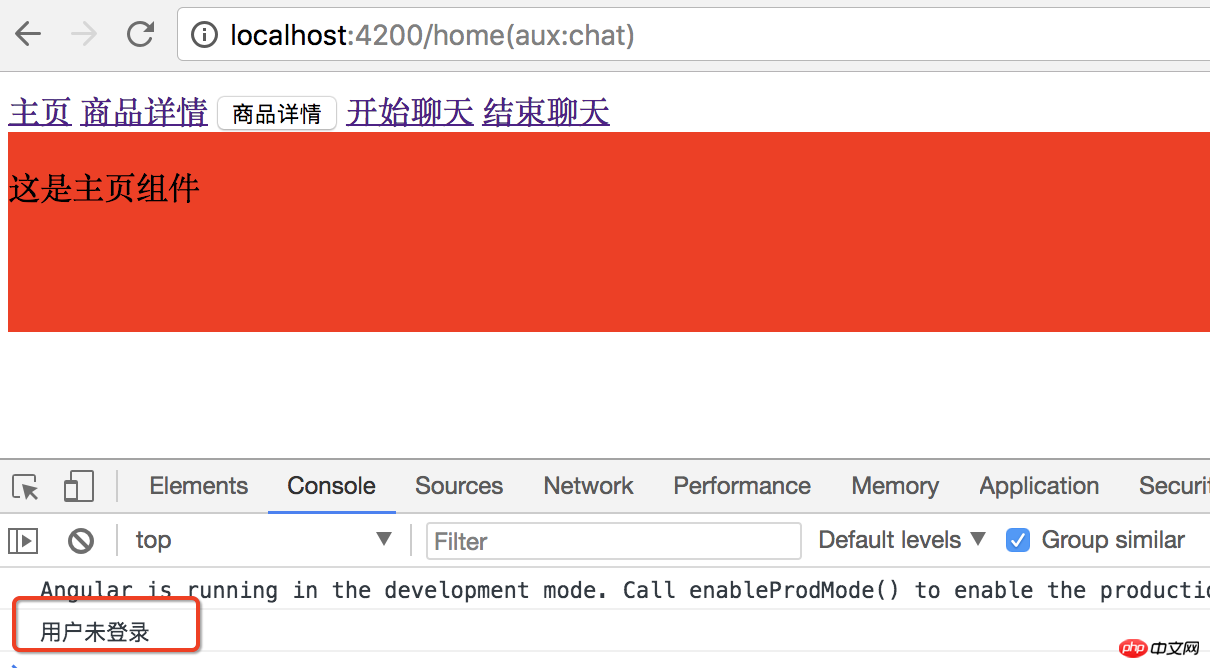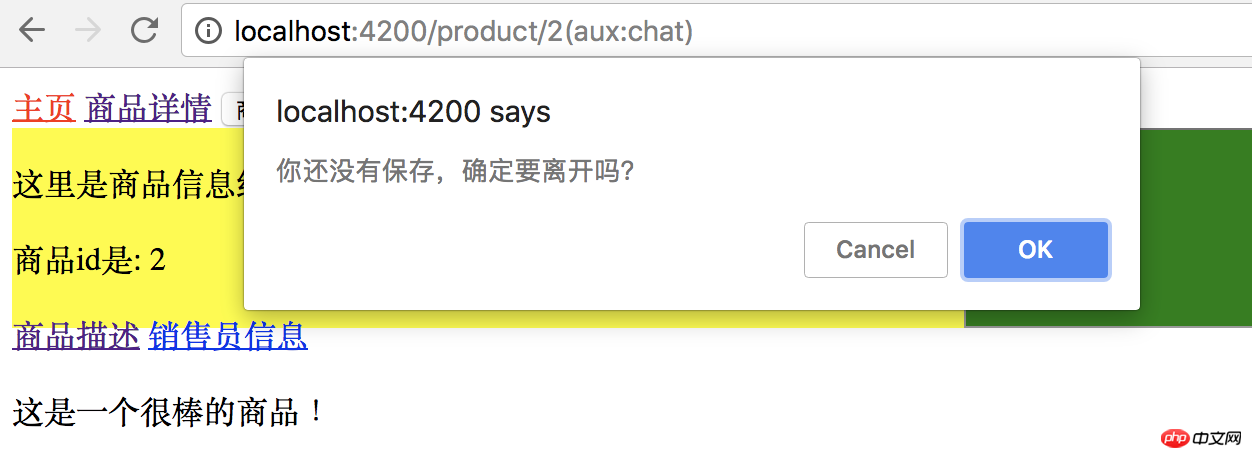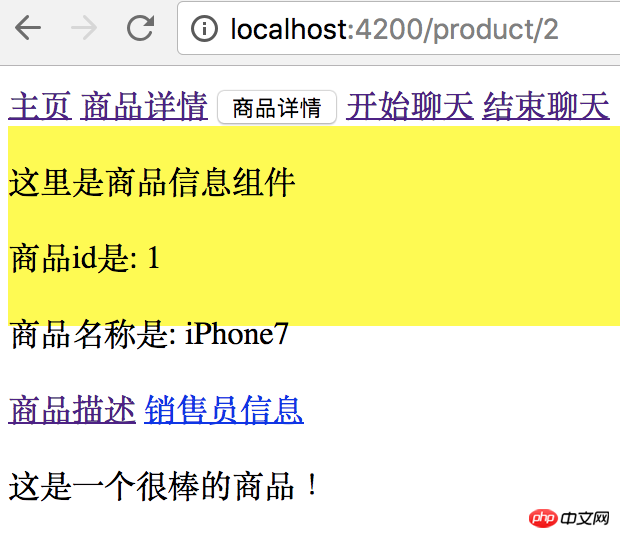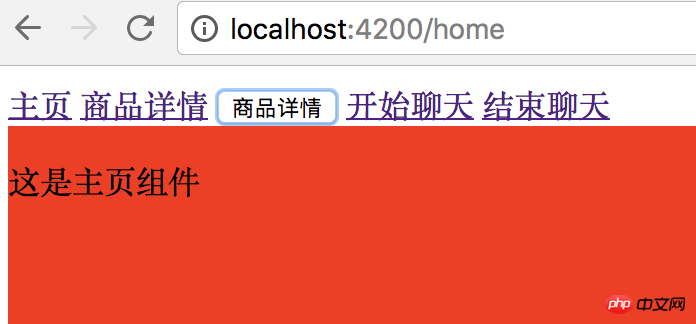
This time I will bring you a detailed explanation of the steps to use Angular routing guard. What are the precautions when using Angular routing guard? The following is a practical case, let's take a look.
1. Route Guard
Users are only allowed to enter or leave a route when they meet certain conditions.
Route guard scenario:
Only when user logs in and has certain permissions, certain routes can be entered.
A wizard composed of multiple forms, such as a registration process. Users can navigate to the next route only if they fill in the required information in the components of the current route.
Remind the user when the user attempts to leave the current navigation without performing a save operation.
Angular provides some hooks to help control entering or leaving routes. These hooks are routing guards, and the above scenarios can be realized through these hooks.
CanActivate: Handles navigation to a route.
CanDeactivate: Handles departure from the current route.
Resolve: Get routing data before routing activation.
Some attributes are used when configuring routing, path, component, outlet, children, routing guards are also routing attributes.
2. CanActivate
Example: Only allow logged-in users to enter product information routing.
Create a new guard directory. Create a new login.guard.ts in the directory.
The LoginGuard class implements the CanActivate interface and returns true or false. Angular determines whether the request passed or failed based on the return value.
import { CanActivate } from "@angular/router";
export class LoginGuard implements CanActivate{
canActivate(){
let loggedIn :boolean= Math.random()<0.5;
if(!loggedIn){
console.log("用户未登录");
}
return loggedIn;
}
}Configure product routing. First add LoginGuard to providers and then specify the routing guard.
canActivate can specify multiple guards, and the value is an array.
const routes: Routes = [
{ path: '', redirectTo : 'home',pathMatch:'full' },
{ path: 'chat', component: ChatComponent, outlet: "aux"},//辅助路由
{ path: 'home', component: HomeComponent },
{ path: 'product/:id', component: ProductComponent, children:[
{ path: '', component : ProductDescComponent },
{ path: 'seller/:id', component : SellerInfoComponent }
] ,canActivate: [LoginGuard]},
{ path: '**', component: Code404Component }
];Effect: Click the Product details link console to remind the user that they are not logged in and cannot enter the product details route.

3. CanDeactivate
Route guard when leaving. Remind users to save before leaving.
Create a new unsave.guard.ts file in the guard directory.
The CanDeactivate interface has a generic type that specifies the type of the current component.
The first parameter of the CanDeactivate method is the component of the generic type specified by the interface. Based on the status of the component to be protected, or calling a method to determine whether the user can leave.
import { CanDeactivate } from "@angular/router";
import { ProductComponent } from "../product/product.component";
export class UnsaveGuard implements CanDeactivate<ProductComponent>{
//第一个参数 范型类型的组件
//根据当前要保护组件 的状态 判断当前用户是否能够离开
canDeactivate(component: ProductComponent){
return window.confirm('你还没有保存,确定要离开吗?');
}
}To configure routing, add it to the provider first, and then configure the routing.
import { NgModule } from '@angular/core';
import { Routes, RouterModule } from '@angular/router';
import { HomeComponent } from './home/home.component';
import { ProductComponent } from './product/product.component';
import { Code404Component } from './code404/code404.component';
import { ProductDescComponent } from './product-desc/product-desc.component';
import { SellerInfoComponent } from './seller-info/seller-info.component';
import { ChatComponent } from './chat/chat.component';
import { LoginGuard } from './guard/login.guard';
import { UnsaveGuard } from './guard/unsave.guard';
const routes: Routes = [
{ path: '', redirectTo : 'home',pathMatch:'full' },
{ path: 'chat', component: ChatComponent, outlet: "aux"},//辅助路由
{ path: 'home', component: HomeComponent },
{ path: 'product/:id', component: ProductComponent, children:[
{ path: '', component : ProductDescComponent },
{ path: 'seller/:id', component : SellerInfoComponent }
] ,canActivate: [LoginGuard],
canDeactivate: [UnsaveGuard]},
{ path: '**', component: Code404Component }
];
@NgModule({
imports: [RouterModule.forRoot(routes)],
exports: [RouterModule],
providers: [LoginGuard,UnsaveGuard]
})
export class AppRoutingModule { }Effect:
Click ok to leave the current page, cancel to stay on the current page.

4. Resolve guard
There is a delay in returning http request data, resulting in the template not being displayed immediately.
Before the data is returned, all places on the template that need to use interpolation Expression to display the value of a controller are empty. The user experience is not good.
resolve Solution: Go to the server to read the data before entering the routing. After reading all the required data, enter the routing with the data and display the data immediately.
Example:
Before entering the product information routing, prepare the product information and then enter the routing. If you cannot get the information, or there is a problem getting the information, you will jump directly to the Error message page, or a prompt will pop up, and you will no longer enter the target route.
First declare the product information type in product.component.ts.
import { NgModule } from '@angular/core';
import { Routes, RouterModule } from '@angular/router';
import { HomeComponent } from './home/home.component';
import { ProductComponent } from './product/product.component';
import { Code404Component } from './code404/code404.component';
import { ProductDescComponent } from './product-desc/product-desc.component';
import { SellerInfoComponent } from './seller-info/seller-info.component';
import { ChatComponent } from './chat/chat.component';
import { LoginGuard } from './guard/login.guard';
import { UnsaveGuard } from './guard/unsave.guard';
const routes: Routes = [
{ path: '', redirectTo : 'home',pathMatch:'full' },
{ path: 'chat', component: ChatComponent, outlet: "aux"},//辅助路由
{ path: 'home', component: HomeComponent },
{ path: 'product/:id', component: ProductComponent, children:[
{ path: '', component : ProductDescComponent },
{ path: 'seller/:id', component : SellerInfoComponent }
] ,canActivate: [LoginGuard],
canDeactivate: [UnsaveGuard]},
{ path: '**', component: Code404Component }
];
@NgModule({
imports: [RouterModule.forRoot(routes)],
exports: [RouterModule],
providers: [LoginGuard,UnsaveGuard]
})
export class AppRoutingModule { }Create new product.resolve.ts in the guard directory. The ProductResolve class implements the Resolve interface.
Resolve must also declare a paradigm, which is the type of data to be parsed by resolve.
import { Resolve, ActivatedRouteSnapshot, RouterStateSnapshot, Router } from "@angular/router";
import { Injectable } from "@angular/core";
import { Observable } from "rxjs/Observable";
import { Product } from "../product/product.component";
@Injectable()
export class ProductResolve implements Resolve<Product>{
constructor(private router: Router) {
}
resolve(route: ActivatedRouteSnapshot, state: RouterStateSnapshot): Observable<any> | Promise<any> | any {
let productId: number = route.params["id"];
if (productId == 2) { //正确id
return new Product(1, "iPhone7");
} else { //id不是1导航回首页
this.router.navigate(["/home"]);
return undefined;
}
}
}路由配置:Provider里声明,product路由里配置。
resolve是一个对象,对象里参数的名字就是想传入的参数的名字product,用ProductResolve来解析生成。
import { NgModule } from '@angular/core';
import { Routes, RouterModule } from '@angular/router';
import { HomeComponent } from './home/home.component';
import { ProductComponent } from './product/product.component';
import { Code404Component } from './code404/code404.component';
import { ProductDescComponent } from './product-desc/product-desc.component';
import { SellerInfoComponent } from './seller-info/seller-info.component';
import { ChatComponent } from './chat/chat.component';
import { LoginGuard } from './guard/login.guard';
import { UnsaveGuard } from './guard/unsave.guard';
import { ProductResolve } from './guard/product.resolve';
const routes: Routes = [
{ path: '', redirectTo : 'home',pathMatch:'full' },
{ path: 'chat', component: ChatComponent, outlet: "aux"},//辅助路由
{ path: 'home', component: HomeComponent },
{ path: 'product/:id', component: ProductComponent, children:[
{ path: '', component : ProductDescComponent },
{ path: 'seller/:id', component : SellerInfoComponent }
] ,
// canActivate: [LoginGuard],
// canDeactivate: [UnsaveGuard],
resolve:{ //resolve是一个对象
product : ProductResolve //想传入product,product由ProductResolve生成
}},
{ path: '**', component: Code404Component }
];
@NgModule({
imports: [RouterModule.forRoot(routes)],
exports: [RouterModule],
providers: [LoginGuard,UnsaveGuard,ProductResolve]
})
export class AppRoutingModule { }修改一下product.component.ts 和模版,显示商品id和name。
import { Component, OnInit } from '@angular/core';
import { ActivatedRoute, Params } from '@angular/router';
@Component({
selector: 'app-product',
templateUrl: './product.component.html',
styleUrls: ['./product.component.css']
})
export class ProductComponent implements OnInit {
private productId: number;
private productName: string;
constructor(private routeInfo: ActivatedRoute) { }
ngOnInit() {
// this.routeInfo.params.subscribe((params: Params)=> this.productId=params["id"]);
this.routeInfo.data.subscribe(
(data:{product:Product})=>{
this.productId=data.product.id;
this.productName=data.product.name;
}
);
}
}
export class Product{
constructor(public id:number, public name:string){
}
}<p class="product">
<p>
这里是商品信息组件
</p>
<p>
商品id是: {{productId}}
</p>
<p>
商品名称是: {{productName}}
</p>
<a [routerLink]="['./']">商品描述</a>
<a [routerLink]="['./seller',99]">销售员信息</a>
<router-outlet></router-outlet>
</p>效果:
点商品详情链接,传入商品ID为2,在resolve守卫中是正确id,会返回一条商品数据。
点商品详情按钮,传入商品ID是3,是错误id,会直接跳转到主页。


相信看了本文案例你已经掌握了方法,更多精彩请关注php中文网其它相关文章!
推荐阅读:
The above is the detailed content of Detailed explanation of the steps to use Angular route guard. For more information, please follow other related articles on the PHP Chinese website!




